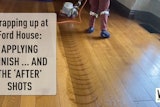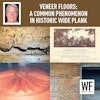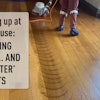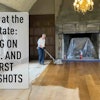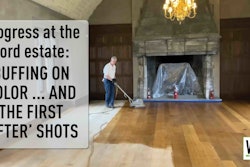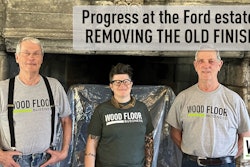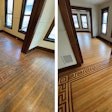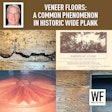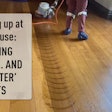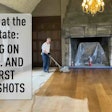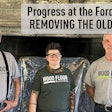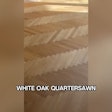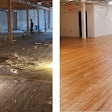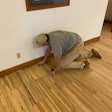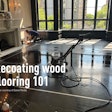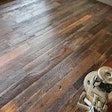
Jason Elquest

Blackhawk Floors Inc., Scottsdale, Ariz.
Debris, debris, debris. You have to be diligent about your cleaning process. Sweep, vacuum and tack. Always sweep and vacuum in between sanding sequences and prior to final screening/buffing. I seldom sweep the floor again after this point, as I don't want to scratch the floor with any debris that may be on the floor. From here forward I will vacuum and tack the floor until it is as dustless as I feel I can make it. It is possible to create an impeccable finish in the field, and yet it is seldom done. Follow these tips and you can achieve a better finish.
Kjell Nymark

Nymark Custom Wood Floors, Coquitlam, British Columbia
One thing I notice is not enough attention paid to cleaning prior to coating. It seems sanders and finishers get excited about finally getting the chance to coat, so they neglect the final details. Some of these details include vacuuming all horizontal surfaces, blocking airflow from the heating ducts, vacuuming out the gully around the perimeter and changing out the dusty poly that's hanging in the doorway. Debris in the finish often leads to complaints; better to eliminate as much debris as possible before you coat so you don't have to return to do unnecessary repairs.
Jon Namba

Jon Namba Services Inc., Salt Lake City
Film-forming finishes have been the most popular finishes for years, but there is a comeback of hardwax and penetrating oils. With these types of finishes, there is no film build, and I see some common mistakes from people learning to work with these types of products. The most common one is too much oil left on the wood flooring surface. After working in the hardwax/penetrating oils, the excess needs to be removed. When applying these finishes, the object is to "work" the product into the wood and not allow it to sit on top. Leaving the product on the surface does nothing for the performance of the product.
Scott Taylor

Milwaukee
In my area during this time of year, I see problems from cold floors. Some finishes will likely orange peel or wrinkle if the floor is too cold. This is particularly an issue with new construction—some builders will allow the home to drop in temperature to save on energy bills, or it can happen when there is a crawl space below the area you are finishing. When the finish isn't drying properly, the builder will likely blame the contractor. Either way, starting with a floor that is close to 70 degrees will ensure a proper finish application. Consider buying a laser thermometer to measure the temperature of your floor before you start to apply your finish.
Find Out More
To find out when and where these and other NWFA instructors will be teaching this year, go to nwfa.org.










